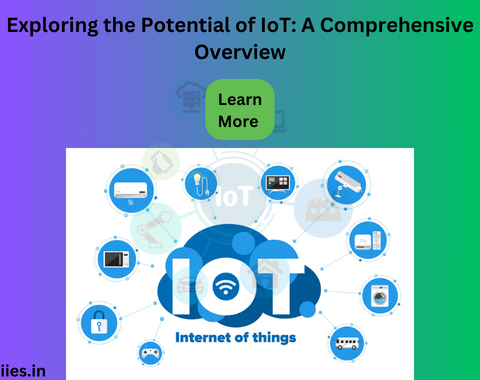
In the ever-evolving landscape of technology, the Internet of Things (IoT) stands out as a transformative force that has reshaped the way we interact with the world. From smart homes to industrial automation, IoT has permeated various aspects of our lives, promising increased efficiency, connectivity, and convenience. This article aims to unravel the basics of IoT, shedding light on its fundamental concepts, components, and applications.
The Internet of Things refers to the network of interconnected devices embedded with sensors, software, and other technologies, allowing them to collect and exchange data. These devices, often called smart devices, can range from everyday objects like refrigerators and thermostats to complex industrial machines. The core idea is to enable these devices to communicate with each other over the internet, creating a seamless web of connectivity.
1. Sensors and Actuators:
Sensors gather data from the environment, such as temperature, humidity, or motion, while actuators respond to the data collected by performing specific actions. These components are the eyes and hands of IoT devices, enabling them to interact with the physical world.
2. Connectivity:
The ability of IoT devices to communicate is crucial. The choice of connectivity depends on factors such as range, power consumption, and data transfer speed. For instance, home devices may use Wi-Fi for high-speed data transfer, while low-power, wide-area networks (LPWAN) are suitable for remote sensors.
3. Data Processing:
IoT devices generate vast amounts of data. To make this data meaningful, processing occurs at various levels. Edge computing involves processing data closer to the device, reducing latency and bandwidth usage. Cloud computing, on the other hand, involves sending data to centralized servers for analysis. The combination of edge and cloud computing ensures efficient data handling in the IoT ecosystem.
4. Security:
With the increasing interconnectivity of devices, security is a paramount concern. IoT devices can be vulnerable to cyber threats, leading to privacy breaches and potential disruptions. Security measures, including encryption, authentication, and regular software updates, are essential to safeguard the integrity of IoT networks.
1. Smart Homes:
From thermostats that learn user preferences to security cameras accessible through smartphones, IoT has revolutionized home automation. Connected devices create an ecosystem where users can control and monitor various aspects of their homes remotely.
2. Healthcare:
In healthcare, IoT devices play a pivotal role in monitoring patients health in real-time. Wearable devices like fitness trackers and smartwatches track vital signs, providing valuable data to healthcare professionals. IoT also facilitates the management of medical equipment and inventory, improving efficiency in healthcare facilities.
3. Industrial IoT (IIoT):
Industrial processes benefit significantly from IoT through the Industrial Internet of Things (IIoT). Sensors attached to machinery can collect data on performance, predict maintenance needs, and optimize production processes. IIoT enhances efficiency, reduces downtime, and contributes to the overall productivity of industries.
4. Smart Cities:
IoT contributes to the development of smart cities by integrating technology into urban infrastructure. Smart traffic management, waste management, and energy-efficient lighting are some examples. The goal is to enhance the quality of life for residents by optimizing resource usage and improving city services.
While IoT presents a plethora of opportunities, it also faces challenges that need addressing for widespread adoption. Some of these challenges include:
1. Security Concerns:
Addressing vulnerabilities and implementing robust security measures are critical to building trust in IoT systems.
2. Interoperability:
The lack of standardized protocols can hinder the seamless integration of diverse IoT devices. Interoperability challenges must be overcome to create a cohesive IoT ecosystem where devices from different manufacturers can work together seamlessly.
3. Privacy Issues:
With the continuous collection of data from IoT devices, privacy concerns come to the forefront. Striking a balance between data collection for improved services and respecting user privacy is a challenge that needs careful consideration.
4. Scalability:
As IoT networks expand, ensuring scalability becomes essential. Systems must be designed to handle a growing number of devices and the associated data traffic without compromising performance.
1. 5G Connectivity:
This will enable applications that demand high data transfer speeds, such as augmented reality and autonomous vehicles.
2. Edge AI:
Integrating artificial intelligence (AI) with edge computing allows devices to make intelligent decisions locally, reducing latency and dependence on cloud services. This trend enhances the efficiency and responsiveness of IoT devices.
3. Blockchain Integration:
Blockchain technology is being explored to enhance the security and transparency of IoT networks. It can provide a decentralized and tamper-proof ledger for recording transactions and ensuring the integrity of data.
The Internet of Things has come a long way from being a futuristic concept to a reality that permeates our daily lives. Its potential to transform industries, enhance efficiency, and improve the quality of life is immense. Understanding the basics of IoT—its components, applications, challenges, and future trends—empowers us to navigate this evolving landscape and harness the full potential of interconnected devices. As IoT continues to evolve, addressing challenges and embracing emerging technologies will be key to unlocking new possibilities and reshaping the way we interact with the world around us.
Indian Institute of Embedded Systems – IIES